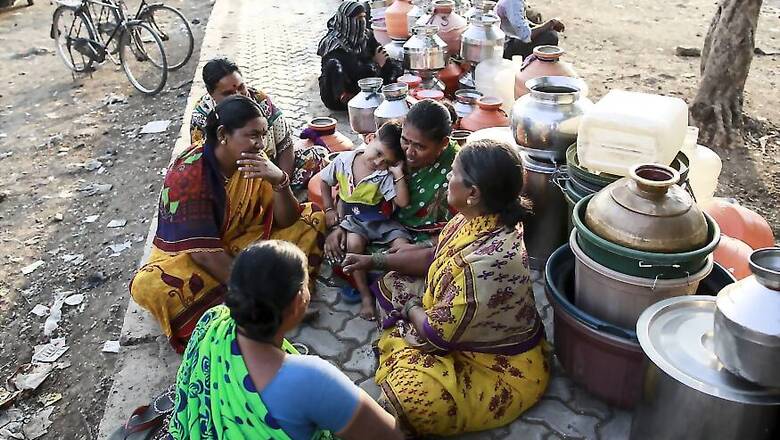
views
A dry spell during monsoons has aggravated the ongoing water crisis in Maharashtra to calamitous proportions. With rivers running dry, water levels in dams and reservoirs at an all time low, the state has very few options left but to deploy water tankers in drought affected regions — of which the most seriously affected is Marathwada - in record numbers.
But this isn't the first time when the state is reeling under a severe water shortage. Could the government have done anything to prevent the ongoing crisis? Could a citizen-led initiative have changed things for the better on ground.
Popatrao Baguji Pawar is someone who has given serious thought to this and actually transformed his village — Hiware Bazaar in Ahmednagar district whose Sarpanch he is — from a water parched to a water surplus area, an effort for which he's won national and international recognition.
"Well to be honest, there is little that can be done when the state is reeling from third consecutive rainless year," says Pawar. What the lack of rains have done, he says, is that they've disturbed crop patterns. Since rains have become unpredictable and scarce crops have been destroyed, further deepening the crisis.
However, it isn't as if the state had no options before the situation grew worse. When Pawar took over as the sarpanch of his village, which falls in a rain-shadow area, back in '89, the water crisis was as big if not worse.
Some steps that he took back then, like banning water intensive crops like sugarcane and banana, prohibiting tubewells and creating village's own water budget, have borne huge fruits. Despite falling in rain shadow area, his village, which receives only 172 mm of rainfall a year, has a water table only 30-40 feet below ground.
The water regulator in Maharashtra only recently ordered stopping the diversion of additional water to the politically powerful region of Baramati, Sharad Pawar’s constituency. Water intensive sugarcane crop were reportedly consuming disproportionate amounts of water.
Speaking of water regulator, what may be ironic in case of Maharashtra's water crisis is that it is the only state in the country which was the first to set up a Water Regulatory Authority (WRA).
But Maharashtra's WRA has yet to regulate water extractor or put, and implement, a water pricing policy, steps that could have helped check pilferage of water and gone a long way in ensuring water to chronically dry areas.
Unmesh Bhaiyyasaheb Patil, the BJP MP from Jalgaon, claims that there is yet another way of providing water supply to parched regions — a step that he admits his government in the state has been dragging its feet on for some time.
"There are places in Western Maharashtra that get up to 1,500 mm of rainfall. Heavy rains lash the rivers, which carry all that water to the sea. We lose large quantities of water, which can benefit so many people. What other option do we have? Desalination plants, which can treat water from the sea, are still prohibitively expensive and cannot be installed throughout the state," Patil says.
Although Pawar, doesn't think it to be a very feasible idea. "The idea of getting water from water excessive regions in the Western part of the state is good in principle. But there are two issues with it. First, whether it is economically feasible. Can we create this network of pipelines without burdening the exchequer with extravagant costs? The second issue will be to set up water treatment plants all along. I think we should have a detailed study for this idea before taking it up seriously," the BJP MP adds.
Patil recommends another way to help Maharashtra save a lot of potable water. A state like Telangana has been an exemplar in this method, Patil says. "They worked on this issue over the past four years and allocated around 40,000 crore to deal with the water crisis. We, as a chronic water-parched state, have only a water budget of around Rs 7,000 crore. We need to work on this water connectivity project on mission mode. There is no other choice," Patil further states.
Though, he adds that some initiatives, like river connectivity, which were pending for the last 15 years have been finished recently which is laudatory. Another praiseworthy move is the fact that for the first time money is coming in to the state in this regard from organisations like NABARD (National Bank for Agriculture and Rural Development).
"Also, drip irrigation schemes have proved effective. We should provide 100% subsidy to drip irrigation especially for water intensive crops like sugarcane and banana. That will save the state a lot of water. Modiji has recently created a Jal Shakti Ministry for the first time. I have a lot of hopes from it. Let's see what we can do with its help," he says.



















Comments
0 comment